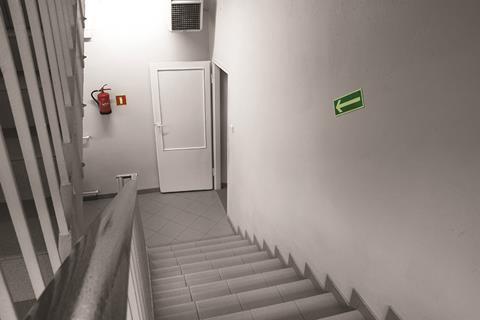Official says designs with āholesā can receive approval in some circumstances
A leading figure at the ŠŌ°ÉµēĢØ Safety Regulator has confirmed high-rise residential blocks will not always need to have a complete design in order to receive building control approval.
Under new rules coming fully into force in April, designs will have to receive building control approval at gateway two ā a āhard stopā which replaces the deposit of plans stage in the current regime.
The BSR has said previously that the application must contain āsufficient information to show that the building will satisfy all applicable building regulationsā.

This has been widely interpreted to mean a full design must be submitted at the pre-construction gateway two stage in order to receive building control approval allowing work to start.
But Neil Hope-Collins, the operational policy lead for higher-risk building control authority at the ŠŌ°ÉµēĢØ Safety Regulator, told a webinar: āThere will legitimately be parts of the design where it is not reasonable to expect the full detail of the outset.ā
He said the regulator will still require more information about the design of the building than under the previous building control regime and added: āThere are bits that you legitimately canāt have the detail for yet because thatās six years down the line.
āThe standards, the contractors, may change. Technology may move on. You donāt know how that bit of the hole is going to be filled.ā
The comments have been interpreted as a shift by the regulator. Adam Hopkins, senior technical manager at housing association Peabody, said: āThis appears to contrast with the messaging to date, and the notion that the design must be āall but completeā at gateway two.
>>See also:
>>See also:
āOver the past months and years, Iāve participated in and observed conversations between professionals where the debate is about how all this work will get completed before gateway two.
āIf the messaging hasnāt changed, then how has the industry managed to so radically misinterpret the expectations of the regulator?ā
Iain McIlwee, chief executive of trade body Finishes and Interiors Sector, said the BSRās comments signalled āa worrying watering down of the interpretation of regulationā.
And Jon Pagan, head of technical at fire safety consultant Kiwa, said the reaction to the BSR comments āemphasises one of the main problems that we have with the new gateway process - the lack of clarity on fundamental aspects of itā.
But others in the industry welcomed the clarity on the flexibility provided. Andrew Mellor, partner at architect PRP, told ŠŌ°ÉµēĢØ the ānew approachā set out by Hope-Collins is āthe only sensible approach and will be very welcomed by the industryā.
A spokesperson for the BSR said the regulatorās messaging has been consistent throughout and said the legislation allows building control applications to be āapproved with requirementsā, which can include a direction to provide specified plans or documents by a specified date.
She said: āThe consistent message from BSR has been that there should be sufficient detail for the regulator to be assured that if built the design will satisfy all applicable requirements of building regulations.
āThis recognises that there could be details and areas of design that it was not reasonable for a client to provide at the initial point of application.ā
The new regime applies to āhigher-risk buildingsā ā defined as being at least 18m in height or have at least seven storeys and two residential units.





















No comments yet